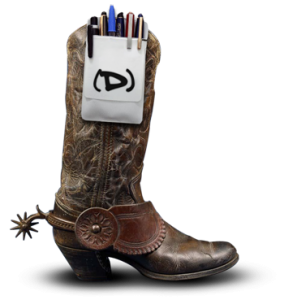 In my last post, I wrote about the importance of changing the thinking about accessible design and how design itself is a powerful tool for change. Designing for change was a second strong theme at Big Design 2012, continuing from Big Design and UPA last year. Several sessions explored using design to bring about change, from personal to global.
In my last post, I wrote about the importance of changing the thinking about accessible design and how design itself is a powerful tool for change. Designing for change was a second strong theme at Big Design 2012, continuing from Big Design and UPA last year. Several sessions explored using design to bring about change, from personal to global.
In “Designing Behavior Change Games,” Dustin Ditommaso talked about designing to achieve behavior change. By blending behavior change theory and game theory, he designs games to improve behaviors, particularly for medical applications. He talked about how behavior change games go beyond gamification and work to result in permanent behavior change. Behavior change games offer the following:
- “Create novelty and interest for uninteresting activities
- Provide planning, structure, goal-setting and routine
- Facilitate feelings of autonomy and intrinsic motivation
- Develop and improve skills to enable change
- Provide a platform for enhancing feelings of competence
- Provide a platform for social support and influence”
A few examples of behavior change games include Health Month, Goalpost, Re-mission, Superbetter, and Ditommaso’s own Healthrageous.
When deciding to develop a behavior change game, designers need to understand behaviors in context:
- “What are the key specific behaviors?
- Why are the behaviors there?
- What needs to change for desired behavior to occur?
- What core behavior change techniques will be used?”
Activities can be turned into a game if the following conditions are met:
- “If the behavior can be learned or modified
- If the progress can be measured
- If feedback can be delivered in a timely manner”
Of course, understanding the audience, their aptitude for games, and their likely interest in one type of game over another are important to research and understand as well. Tailored to the right audience, behavior change games offer tangible, incremental progress and regular rewards that encourage successful changes for engaged players.
Dana Chisnell talked of designers having “superpowers” in “Leading by Design.” Chisnell, an expert in usability in voting and elections, shared her experiences as well as other efforts where design and design thinking is changing the world for good. Some examples of design for good included the Lifesaver bottle, using 3-D printers to print “bones,” Code for America, and others as well as examples from the audience.
Just a few of the superpowers designers offer to the world besides specific design skills:
- Training
- Practice
- Observations
- Experience
- Attention to Detail
- Patience
Chisnell asserted that “designers can be agents of change because we can deliver incremental, evolutionary, tolerant change.” She encouraged designers to get involved in making the world a better place to promote world peace and use our superpowers for good beyond our daily work. She said there are many ways to serve and promote change. From her own extensive experience in voting projects, she suggested just a few ways to affect change:
- Serve as an election worker
- Proofread for your county elections office
- Remove the stigma of the accessible voting system by using “this machine in the corner” of your polling place
- Participate on projects such as AIGA Design for Democracy and UPA Usability in Civic Life
- Support projects such as Kickstarter project for Field Guides: Upcoming projects will focus on education materials and registrar websites
What’s that? You’ve got killer deadlines at work? Your child has a dentist appointment? The car needs an oil change? I understand. I really do. I have an ever-growing list like that of my own. So I am going to share with you a few highlights from Brandon Gadoci’s inspiring “Getting to the Try” that I hope can help if you need to take on a more personal change: Redesigning you. He shared his personal and continuing journey to make a difference for his own dreams and aspirations despite being too busy. While his focus is on building the skills and knowledge to develop products and new businesses, his advice applies well to the message of redesigning the world for good and making time to get involved.
First, get uncomfortable. Change hurts. It brings fear of failure, pain, sacrifice, and doubt, but also hope and success. If we stay in our comfort zones with what we know, we cannot grow and make our full impact in the world. We should understand what we know and can already do, and then figure out what we need to know to accomplish our goals. Gadoci suggested finding resources, training, and communities to gain the knowledge and skills we lack. The most important step, though, is to start doing something to move forward and gain momentum. He asserted that momentum is greater than ideas because action generates more action.
Time management, even to the point of being a “jerk” to defend our time, is a critical part of progress. He again emphasized just doing something, emphasizing “progress over perfection.” Gadoci shared that he had to learn to chop tasks down to size and prioritize tasks. He also noted that he is not talking about multitasking, but rather “short bursts of focus.”
Finally, he concluded that we needed to take care of ourselves during the process. Eating well, sleeping (although he admitted that he needed more), being fit, and keeping our relationships strong were all important to maintaining the right motivation.
I previously shared a prediction by Whitney Hess for designers to shift focus from making stuff to making “stuff that matters.” These sessions certainly showed ways our colleagues are making that prediction come true and gave some ideas for all of us to contribute as well.
